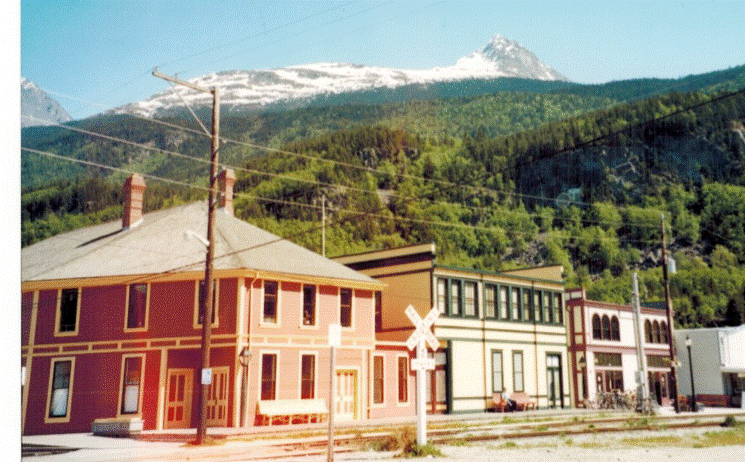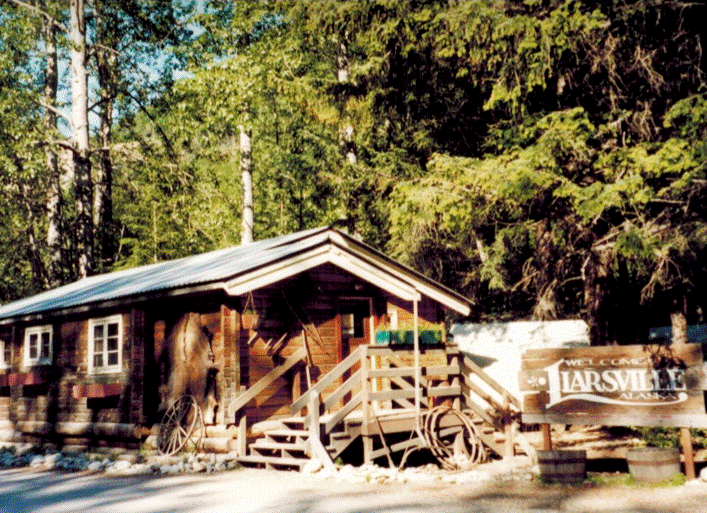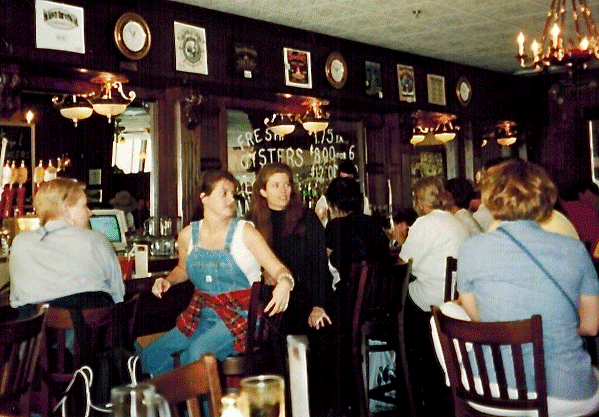BY: JANET STEINBERG
Along with the big cities like Juneau, Anchorage and
Sitka, many cruise include calls at some of the smaller, yet more
colorful, ports in Alaska. The town of Skagway is one of them.
Sitka, many cruise include calls at some of the smaller, yet more
colorful, ports in Alaska. The town of Skagway is one of them.
 |
| VINTAGE FRONTIER SKAGWAY, ALASKA |
This vintage frontier town, with its wooden sidewalks,
false-fronted buildings and unpaved main street, recalls a time when a
thimbleful of gold dust discovered in the Klondike sparked an invasion of greed
that sent the population from 2 to 10,000 in one year.
false-fronted buildings and unpaved main street, recalls a time when a
thimbleful of gold dust discovered in the Klondike sparked an invasion of greed
that sent the population from 2 to 10,000 in one year.
During the Gold Rush, Skagway had as many as 80
saloons at one time. It was known as the “roughest town on
earth”. The crusty lot of prospectors ultimately moved on,
(today’s population is less than 1000) but they left behind their colorful town
and a host of tales that bring a blush to even the most sophisticated
face.
saloons at one time. It was known as the “roughest town on
earth”. The crusty lot of prospectors ultimately moved on,
(today’s population is less than 1000) but they left behind their colorful town
and a host of tales that bring a blush to even the most sophisticated
face.
Skagway’s most exclusive house of ill-repute was once
atop the Red Onion Saloon.
atop the Red Onion Saloon.
 |
| RED ONION SALOON |
It then became a brothel museum which has now been
moved to an ersatz Gold Rush Trail Camp just outside the city. Bus tours
will take you to this trail camp called Liarsville which has been recreated
exactly where it stood a century ago.
moved to an ersatz Gold Rush Trail Camp just outside the city. Bus tours
will take you to this trail camp called Liarsville which has been recreated
exactly where it stood a century ago.
 |
| WELCOME TO LIARSVILLE |
Music will beckon you to the Liarsville Hippodrome
where the madam tells tales of the notorious Red Onion Saloon and a
“sourdough” (a native or one who has survived an Alaskan winter) lays
out some of the best Robert Service poetry in the North.
where the madam tells tales of the notorious Red Onion Saloon and a
“sourdough” (a native or one who has survived an Alaskan winter) lays
out some of the best Robert Service poetry in the North.
 |
| A MADAM TELLS STORIES |
By the time you leave, you’ll know more about gold
panning than most of the Stampeders. You’ll even get a chance to pan for
gold and you can keep whatever gold you find.
panning than most of the Stampeders. You’ll even get a chance to pan for
gold and you can keep whatever gold you find.
Back in town, you can relive the Gold Rush days in the
Klondike spirit served up at the Red Onion Saloon. The folks at
the Red Onion thoughtfully remind guests not to “Timber the
Bell”. A sign reads: “He who rings the bell in jest, buys a
drink for all the rest”.
Klondike spirit served up at the Red Onion Saloon. The folks at
the Red Onion thoughtfully remind guests not to “Timber the
Bell”. A sign reads: “He who rings the bell in jest, buys a
drink for all the rest”.
 |
|
RED ONION SALOON
|
The Golden North Hotel, Alaska’s oldest operating
hotel, has a history as rich as Skagway’s own. The hotel was built in
1898 during the Gold rush, and served as a “first class hotel for a unique
clientele of gold miners, business opportunists and argonauts.”Originally
the two story domed building was located at Third Avenue & State Street.
In 1908, it was moved to its present location (third Avenue & Broadway) by
one man and a horse using a capstan.
hotel, has a history as rich as Skagway’s own. The hotel was built in
1898 during the Gold rush, and served as a “first class hotel for a unique
clientele of gold miners, business opportunists and argonauts.”Originally
the two story domed building was located at Third Avenue & State Street.
In 1908, it was moved to its present location (third Avenue & Broadway) by
one man and a horse using a capstan.
Originally established in 1897, the ads for the
Skagway Brewing Company, serving thirsty prospectors, touted
“turning out a superior article of Beer”. Its Blue Top Porter
and Red Star Amber were “absolutely unexcelled”. Though the
brewery was forced out of business during prohibition, it has now been
re-established several times.
Skagway Brewing Company, serving thirsty prospectors, touted
“turning out a superior article of Beer”. Its Blue Top Porter
and Red Star Amber were “absolutely unexcelled”. Though the
brewery was forced out of business during prohibition, it has now been
re-established several times.
Lunch at the Skagway Brewing Company must include
Alaskan Halibut (halibut is the fish of Skagway) and a bowl of Brewhouse Chili
simmered to perfection with their hand-crafted ale.. The latter
should be washed down with a dark robust Blue Top Porter, the local favorite.
Alaskan Halibut (halibut is the fish of Skagway) and a bowl of Brewhouse Chili
simmered to perfection with their hand-crafted ale.. The latter
should be washed down with a dark robust Blue Top Porter, the local favorite.
The folktale of Soapy Smith, the legendary con man of Skagway, has been told in
books, poetry and musical comedy for nigh on a century in
Skagway. Soapy Smith is buried just outside the boundary line of the
Gold Rush Cemetery. Being the con man that he was, the honorable citizens
would not allow him inside their cemetery. Soapy’s simple grave marker
reads: “Jefferson R. Smith; Died July 8-1898; Aged 38 Years”.
books, poetry and musical comedy for nigh on a century in
Skagway. Soapy Smith is buried just outside the boundary line of the
Gold Rush Cemetery. Being the con man that he was, the honorable citizens
would not allow him inside their cemetery. Soapy’s simple grave marker
reads: “Jefferson R. Smith; Died July 8-1898; Aged 38 Years”.
The Skagway of the 1890’s was honky-tonk pianos, shady
ladies and grizzled sourdoughs. The false-fronted frame buildings, and
the legends of Soapy Smith and his notorious gang, still live on in the Skagway
of the 21st century.
ladies and grizzled sourdoughs. The false-fronted frame buildings, and
the legends of Soapy Smith and his notorious gang, still live on in the Skagway
of the 21st century.
JANET STEINBERG is an
award-winning Travel Writer and a Travel Consultant affiliated with
The Travel Authority, Mariemont/Cincinnati, Ohio office.
award-winning Travel Writer and a Travel Consultant affiliated with
The Travel Authority, Mariemont/Cincinnati, Ohio office.

